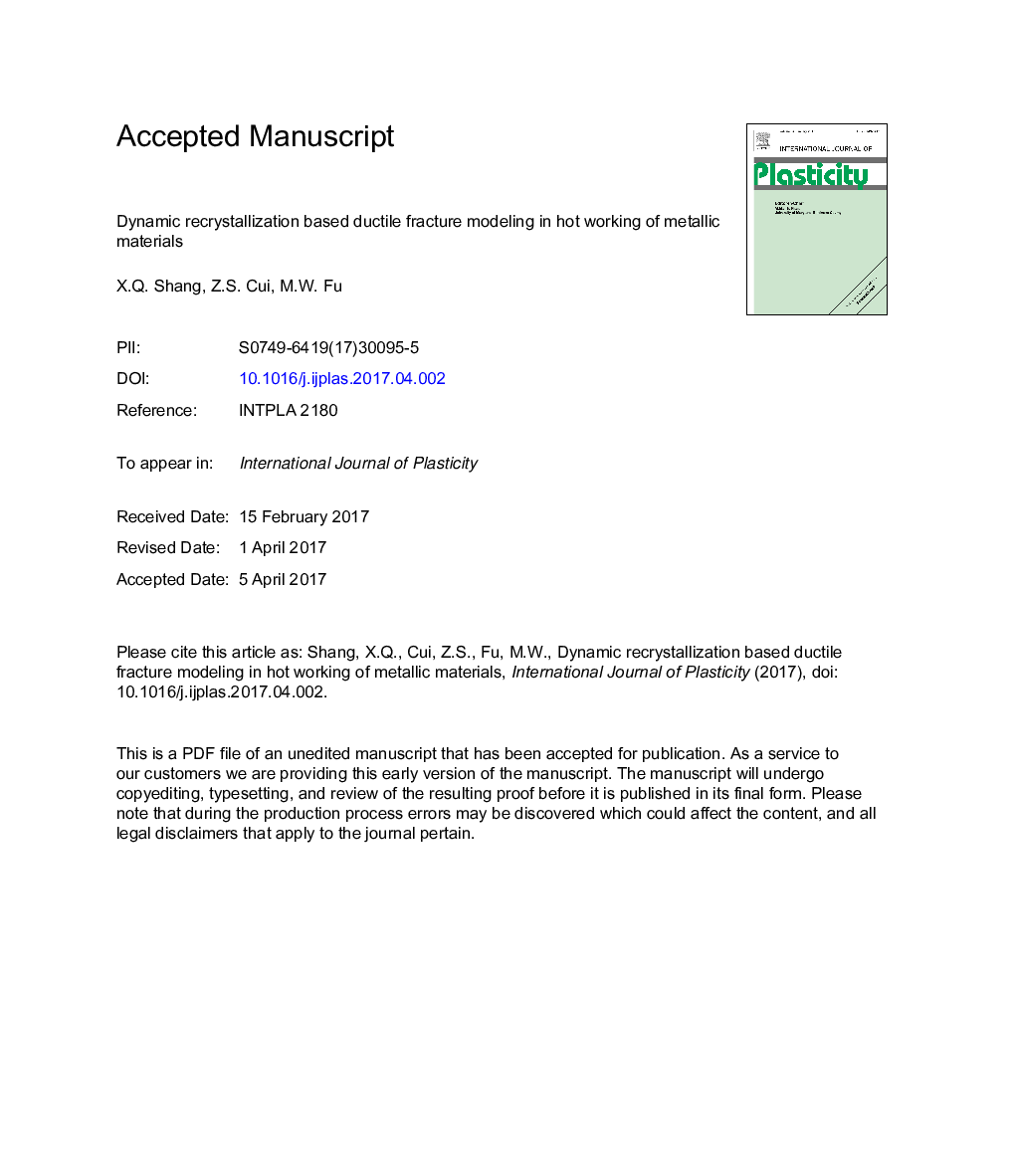| Article ID | Journal | Published Year | Pages | File Type |
|---|---|---|---|---|
| 5016764 | International Journal of Plasticity | 2017 | 62 Pages |
Abstract
Ductile fracture is a key factor to the workability of metallic materials undergoing hot deformation. The ductility of materials at elevated temperature is closely related to dynamic recrystallization (DRX). To systematically investigate the DRX based ductile fracture, hot tensile experiments, microscopic observations and modeling of fracture behavior were conducted for 316LN steel. Based on the experimental results, a monotonic increasing relationship between ductility and the percentage of DRX (Xdrx) was figured out and identified to be attributed to the DRX influenced void evolution. With the softening effect caused by DRX, the local stress concentration, which serves as the driving force of void nucleation, void growth as well as void coalescence of the material, is highly relieved and the behaviors of voids thus change. To describe the DRX based void evolution and predict ductile fracture in hot working process, an extended damage model was established by introducing Xdrx into the void-based GTN-Thomason ductile fracture model, which is termed as the extended GTN-Thomason model in this research. In modeling of the ductile fracture considering DRX, the void nucleation strain, which represents the strain with the highest nucleation rate, and the critical void size ratio, which articulates the onset of void coalescence were figured out to increase with Xdrx. In addition, the strain rate sensitivity and the temperature dependency are involved in representing the kinetics of DRX and the flow stress applied in the model. The developed model was then implemented into finite element (FE) simulation and its related parameters were calibrated via a hybrid experiment and simulation method. Finally, the specific validation experiments were designed and conducted and the predicted fractures agree well with experimental results. This research thus offers an in-depth understanding of the DRX based ductile fracture and further facilitates and supports the design of hot working process by avoiding ductile fracture occurrence.
Related Topics
Physical Sciences and Engineering
Engineering
Mechanical Engineering
Authors
Xiaoqing Shang, Zhenshan Cui, M.W. Fu,
